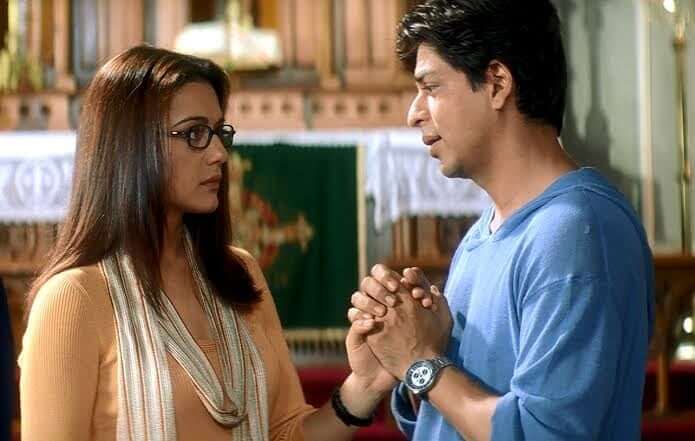Forget all the pandemonium that is happening around, forget all the hue and cry on the outsider-insider syndrome, forget all the allegations of nepotism which are doing the rounds and forget all the animosity and virulence that we all quite righteously have for Bollywood now. Come on… let us do that, at least for a while. Can’t we?….Can’t we?
Let us all backpedal to the year 2003 ~ the advent of the new millennium, the year when I was in Class 8, the year when my mother was all hale and hearty in her early 40s and very much alive, the year when everything was cool and happy around, the year when team India had retrieved its lost glory under the leadership of none other than Saurav Ganguly, the year when love was a lot like love and less of a dating app resource, the year when Kal Ho Naa Ho released in the cold of November, the year when Preity Zinta was my crush, the year when Karan Johar still didn’t mature enough to be called a movie mafia / nepotist (or anything else u say now to him).

If you think that I am writing this article in favor of Kjo or to whitewash his present scathing image, then you are probably wrong as my article has nothing to do with him or his films. I have something to say about a certain scene in the movie ‘Kal Ho Naa Ho’ which coincidentally has its dialogues and screenplay written by ‘yours truly’ Karan Johar. To bring back the world to reading my article on a certain scene of this movie, this prelude or build-up (what u say) was tad bit necessary, considering the present rancour in public around. The Johar we all are dissing now used to be known as the flagbearer of emotional storytelling in elitist mainstream cinema, once upon a time in Bollywood. It would be absolutely unfair if I say his films have never touched me. Being a 90s kid and a fan boy of Shah Rukh Khan, how can one remain unfettered by the magnanimous presence of Kuch Kuch Hota Hai and Kal Ho Naa Ho in his growing up years.
Cut,cut,cut…

Enough of melodrama from my side, now let us please focus on this scene from Kal Ho Naa Ho. ( Lights off, focus on the screen) :
Aman (Shah Rukh Khan) is informed by his doctor friend Priya (Sonali Bendre) over phone that Naina (Preity Zinta) has got to know everything about him. Aman understands the plausibility of the situation, quickly gets up from his hospital bed, detaches the salign tube in a second and just runs out, runs with that heavy breath across the busy streets of New York in the broad daylight to meet Rohit (Saif Ali Khan) at his house. Meanwhile, Naina is also seen walking frantically across the streets of New York, numbed and fazed by the glaring truth.
Rohit and Aman met at Rohit’s balcony and the altercation starts between the two. Aman keeps on coercing Rohit not to give up on Naina to which Rohit says to Aman, “mere jaga mein hote, toh tum kya karte” and then Aman replies saying, “kash Mein tumhare jaga hota” and walks away. In the next scene, we can see both Aman and Naina give that one last hug to each other to bid that final ‘alvida’ (adieue) to their censured love.

Delving deep into the character analysis, I would like to believe that Aman played it very safe while he said to Rohit, ‘kash mein tumhare jaga hota’ because it is easier to say things than get done. Aman tried to be a romantic forlorn who manoeuvred the entire narrative of the supposed love triangle to make Rohit ‘win’ Naina in the end through his ‘che din ladki in’ trope. Did that really make Rohit the leading man in Naina’s life? Did that really solve the crisis in Rohit’s life?
Rohit was absolutely right when he said to Aman, “sachai ka samna main kar sakta hoon Aman, par yaadon ke saath ladne ka taqat nahi hai mujh mein” as it was indeed difficult for him to play a second fiddle to a love story with Aman and Naina as its protagonists. Rohit knew that Aman would always remain etched in Naina’s heart and he would have to gain enough courage to battle out the odds of his destiny with forbearance and a pleasing smile.

I think Aman always treated Rohit as a manchild throughout and never cared to know the man within that child and may be, that’s why he chose to stuff him with all that he craved for, be it the love of Naina or be it saving him from the clutches of the gold digger Camila (she wants ur money… remember Simon Singh?). So when the man in Rohit confronts Aman for the first time in the climax, he couldn’t empathize with him but ended up dominating Rohit to follow his diktat of not leaving Naina at any cost.
Just imagine the climax scene on the death bed where Aman was saying to Rohit, “is janam mein Naina tumhari, par agli har ek janam mein, har ek zindagi mein woh meri hogi…”.
We all must have been on Aman’s side when he said that dialogue but it is more difficult to be a Rohit than an Aman in this narrative.
Rohit just remained a messiah, the messenger of Aman’s dreams of uniting with the love of his life, Naina and that is how he spent the rest of his life with someone who always remained someone else’s. Undeniably, it takes courage to live a life as passive as Rohit’s and still find happiness in that.
Naina and Rohit didn’t fall in love with each other, instead it would be correct if the sentence is framed in a passive tone like Naina and Rohit were made to fall in love with each other by Aman. The character of Rohit was there to just to connect the missing link and play the bridge in between the two hapless lovers, Aman and Naina and may be just for few laughs. Well, people like Rohit are the real heroes who don’t get the limelight but always remain there, strong and steady inside (may be, a bit broken within) with an ever smiling face on the exterior.
“agar tum mere jaga hote, toh tum kya karte”, this is the question that Rohit churned to Aman.
” main hona bhi nahi chahta…”, this should have been the reply of Aman instead of a vague reply like “kash mein tumhare jaga hota…”.
Anyway, putting aside everything, Kal Ho Naa Ho is that one film which will always remain closer to our hearts for its relatable characters, beautiful songs and their picturisation, Shah Rukh’s breathtaking entry scene, Saif’s impeccable comic timing, the hilarious ‘Kanta ben’ episodes and other beautiful anecdotes of life and last but not the least, that ‘Anand’ archetypal premise which serves as the backbone of the film, undeniably.















Add Comment